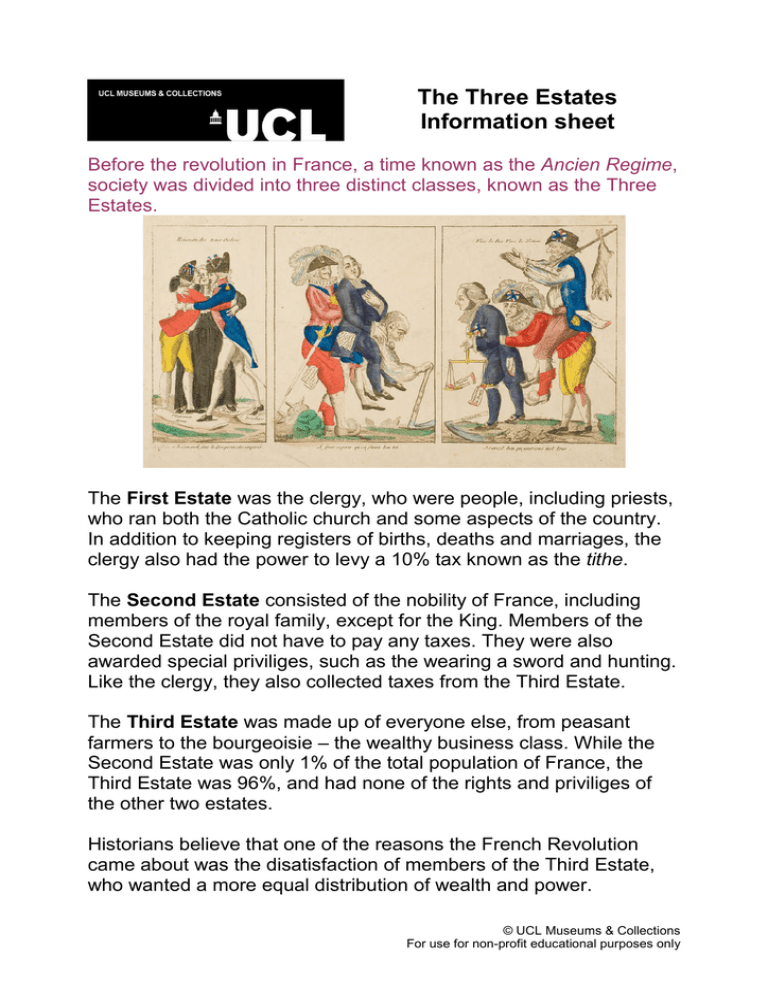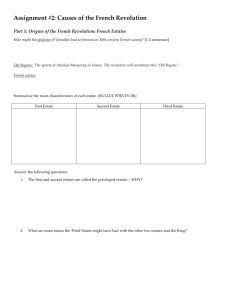The Three Estates Information sheet
advertisement

The Three Estates Information sheet Before the revolution in France, a time known as the Ancien Regime, society was divided into three distinct classes, known as the Three Estates. The First Estate was the clergy, who were people, including priests, who ran both the Catholic church and some aspects of the country. In addition to keeping registers of births, deaths and marriages, the clergy also had the power to levy a 10% tax known as the tithe. The Second Estate consisted of the nobility of France, including members of the royal family, except for the King. Members of the Second Estate did not have to pay any taxes. They were also awarded special priviliges, such as the wearing a sword and hunting. Like the clergy, they also collected taxes from the Third Estate. The Third Estate was made up of everyone else, from peasant farmers to the bourgeoisie – the wealthy business class. While the Second Estate was only 1% of the total population of France, the Third Estate was 96%, and had none of the rights and priviliges of the other two estates. Historians believe that one of the reasons the French Revolution came about was the disatisfaction of members of the Third Estate, who wanted a more equal distribution of wealth and power. © UCL Museums & Collections For use for non-profit educational purposes only Three Estates Worksheet © UCL Museums & Collections For use for non-profit educational purposes only







